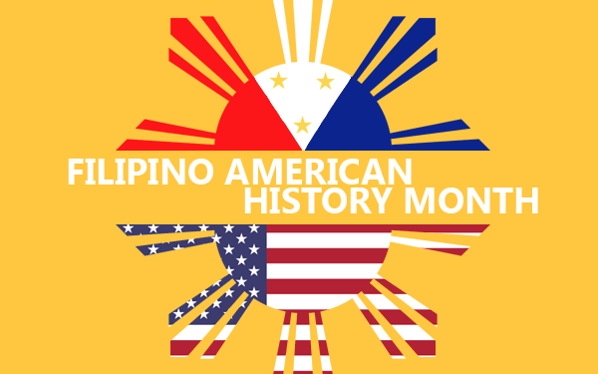Filipino American History Month
By: Roselyn Buensuceso, MD Middle School Program Coordinator
Photos Courtesy of AALEAD Staff and Other Sources
Those who fail to look back to where they came from will not reach where they’re going
José Rizal
October is a time when Filipina/o/x Americans reflect on their overlooked contributions in the United States. Fred Cordova of the Filipino American National Historical Society, who also coined FAHM in 1988, refers to Filipino Americans as the “forgotten Asian Americans” because of a long history of exclusion. They often fall in the “in-between” space of many communities, which makes the Filipinx experience all the more complex.

To provide historical context, the Philippines has a dark and contentious relationship with colonialism. It was previously under Spanish rule for over 300 years, but after Spain’s defeat during the Spanish American war, they were then conceded to the United States in 1898. Unbeknownst to many Americans, the Philippines became an epicenter for colonialism, imperialism, and the military-industrial complex. Although the Philippines has been independent for almost half a century, the United States continues to impose on its sovereignty through their military presence, heavy influence on the school systems, and legal institutions.
When the Philippines was still under American rule, its citizens had slightly more rights compared to other Asian countries when coming to the United States. This created a unique immigration experience where effects are still seen today in Filipino Americans. During the early waves of immigration to the United States in the early 1900s, Filipino Americans were not subject to the same exclusionary laws as their Asian counterparts because of their status as U.S. nationals, but they were not afforded the full rights and privileges of being American, either. Through the eyes of the United States, their land was valuable, but their brown bodies were not. Filipinos were not able to freely immigrate to the United States until 1965 with the Hart-Celler Immigration Act of 1965 repealing national-origins quotas, leading to more people from Asia migrating to the United States than ever before – including those from the Philippines.
As the second largest and second fastest growing ethnic group within the Asian American racial category, Filipino Americans are practically invisible in American society (Hernandez, 2016). Furthermore, because Spanish and American colonization created a more “Western” influence in the Philippines compared to other countries in Asia, Filipinos are pushed into an “in-between” space. Some Filipinos do not identify as Asian American and are instead drawn towards the Latinx community as a result of shared language, food, religion, and surnames. According to Hernandez, the Filipino American identity has been formed in constant dialogue with both Asian America and the United States as a whole, thus creating a unique demographic group that has constantly blurred the lines of racial and ethnic categorization.

Last week, AALEAD’s Maryland middle school youth were given an introduction to the history of Filipinos in America. Throughout the presentation, many Filipinx youth chimed in about their own experiences – defining what colonialism means to them, sharing their memories about the United States’ military presence in the Philippines, and connecting Tagalog and Spanish words that sounded the same.

Following the slideshow, youth had the opportunity to make lumpia – Filipino spring rolls. The filling was prepared before programs so youth could focus on learning how to roll the lumpia, seal it, and fry it. When asked if there were any similar dishes in their communities, youth excitedly shared dishes from their families’ cultures – such as tamales, burritos, and Vietnamese spring rolls.

The Filipinx experience is uniquely positioned in Asian American history. As a Filipino American who grew up not knowing about Filipino American History Month, being able to share this with AALEAD was a rewarding experience. Thanks to AALEAD, youth are able to see themselves represented in history – because their stories count.
References:
Hernandez, X. J. (2016). Filipino american college students at the margins of neoliberalism. Policy Futures in Education, 14(3), 327-344. doi:10.1177/1478210316631870

